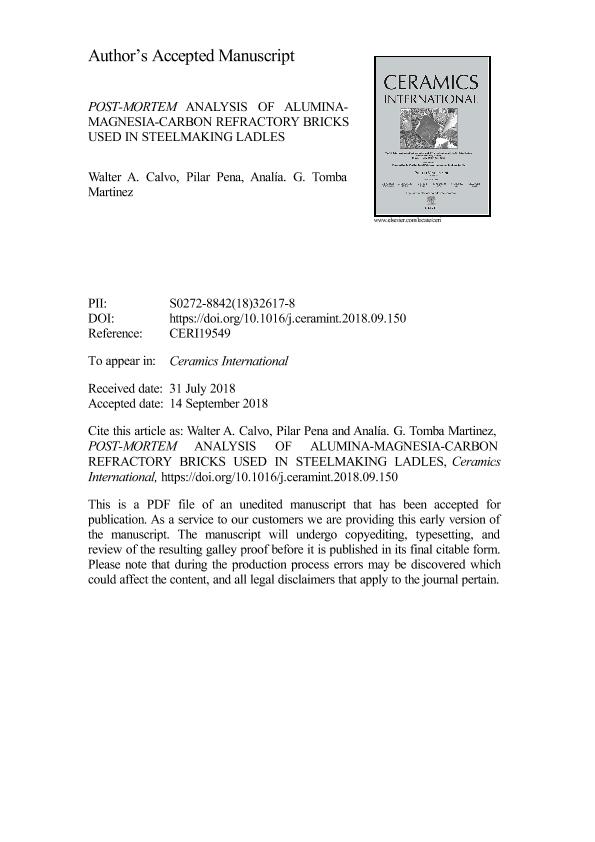Artículo
Post-mortem analysis of alumina-magnesia-carbon refractory bricks used in steelmaking ladles
Fecha de publicación:
15/01/2019
Editorial:
Elsevier
Revista:
Ceramics International
ISSN:
0272-8842
Idioma:
Inglés
Tipo de recurso:
Artículo publicado
Clasificación temática:
Resumen
Post-mortem studies in secondary steelmaking ladles are an important way to determine the factors related to Alumina-Magnesia-Carbon (AMC) refractory corrosion. AMC refractory bricks installed in the impact zone of a steelmaking ladle bottom were analyzed after 100 castings. X-ray diffraction, X-ray fluorescence chemical analysis, reflected optical light microscopy, scanning electron microscopy, energy dispersive X-ray spectrometry, density and porosity measurements, and mercury porosimetry were used to analyze the chemical and physical characteristics of the slag, the unused refractory and the slag+steel attacked bricks. The corrosion process produced a specific microstructure characterized by: i) a thick discontinuous slag layer composed by secondary spinel+steel+liquid; ii) a thick dense, cracked, and continuous layer consisting of calcium aluminates+steel+liquid at the slag/refractory interface; iii) next to this layer, a wide densified layer with a uniform microstructure in which corundum aggregates and spinel crystals were linked together by elongated CaAl12O19 crystals. The formation of these reaction layers constituted a barrier that effectively suppressed the massive slag penetration and surely reduced the wear rate. Thermodynamic calculations based on simplified and complex condensed phase equilibrium diagrams, were used to further understanding of the corrosion mechanism.
Palabras clave:
C. Corrosion
,
E. Refractories
,
Post-Mortem Analysis
Archivos asociados
Licencia
Identificadores
Colecciones
Articulos(INTEMA)
Articulos de INST.DE INV.EN CIENCIA Y TECNOL.MATERIALES (I)
Articulos de INST.DE INV.EN CIENCIA Y TECNOL.MATERIALES (I)
Citación
Calvo, Walter Andrés; Pena, Pilar; Tomba Martinez, Analia Gladys; Post-mortem analysis of alumina-magnesia-carbon refractory bricks used in steelmaking ladles; Elsevier; Ceramics International; 45; 1; 15-1-2019; 185-196
Compartir
Altmétricas




